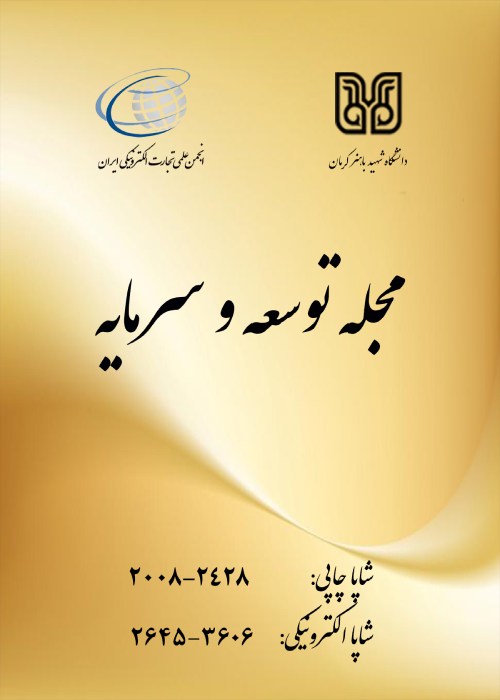The Effect of Monetary Policy Arrangements on the Consumer Price Index in the Middle East and North Africa Countries
Author(s):
Article Type:
Research/Original Article (دارای رتبه معتبر)
Abstract:
Objective
The impacts of monetary arrangements on the general level of prices in the international finance literature have been theoretically considered by economists and have been an important part of empirical studies in recent years. Therefore, the main purpose of this article is to investigate the effect of the survival of monetary systems on the consumer price index as an indirect degree of exchange rate pass-through in 19 MENA countries during the period of 1985-2020.Method
For this purpose, at first, the duration of monetary arrangement is estimated using the survival models approach such as Cox semi-parametric and other non-parametric models with different distributions, and in the next step, by Markov switching approach, low and high inflationary environments are extracted in two regimes, one regime (low inflationary environment with inflation less than mean of inflation) and another regime (high inflationary environment with inflation greater than the mean of inflation). It is mentioned that the inflationary environment with two regimes has been preferred to the inflationary environment with three regimes according to the statistical criterion such as AIC. Finally, prior to the empirical model estimation, the utilization of first generation against second-generation unit root tests have tested by Friedman, Frees and Pesaran tests and at the final step, the empirical model of the research has been estimated by pooled mean group estimator (PMG) method as one of the main co-integrating techniques while the variables order of integration are zero and one.Results
At first step, the survival and non-survival of monetary arrangements were estimated by using of parametric methods and different distributions, and then by Markov Switching model of inflationary environments in both low and high conditions for this group of countries has been estimated and the years in which the countries were in two regimes were identified. The results of estimating the empirical model showed that the null hypothesis that the risk is proportionate and the use of the Cox method in comparisons with other parametric methods was rejected at a significant level of 5%, and therefore alternative parametric methods such as Weibull distribution, normal logarithm, etc. are proper for estimating the survival of monetary arrangements. Next, in order to choose the appropriate distribution in parametric patterns among the Weibull distributions; Exponential, Gamma, Gompertz, Generalized Gamma and Logarithm-Normal Akaike information criterion was used due to a large number of observations (680 observations) and the value of Akaike test statistic for the Weibull distribution is -2403.14 and less than other distributions values. In addition,the results of monetary arrangement survival estimation by Weibull distribution showed that the variables of degree of openness and gross capital formation have a negative and significant effect on the risk of exiting the monetary system, and with an increase of one unit of the degree of openness of the economy and formation of gross domestic fixed capital, respectively, 0.007 and 0.04 units of the durability period or the survival of monetary systems increases or the risk of exiting monetary systems decreases. Also, with an increase of one unit in the inflation rate, the survival of monetary systems in this group of countries decreases by 0.29 units or the risk of exiting monetary arrangements increases. Moreover, the probability of survival or the duration of monetary arrangements in the MENA region has increased from 0.9722 in 1985 to 0.014 in 2020 and the probability of its non-survival has increased from 0.0278 to about 0.986 in 2020. The results for the estimation of an inflationary environment indicated that there is no linear relationship in the inflation rate was rejected at the significant levels of 5 and 10%, and therefore, we used the Markov Switching nonlinear method to extract the inflationary environments. It is worth mentioning that in this research, two regimes of low and high inflation environments have been used. According to the Akaike information criterion, the value of the test statistic was 4.29, which is lower than the three-state regime (4.61). Also, the average inflation rate in the studied countries is equal to 4.02. The overall results of this study show that with the increase in the value of average foreign currencies compared to domestic currencies, the cost of imports in terms of domestic currency increased in this group of countries, resulting in consumer goods prices as indirect effects. Exchange rate fluctuations also increase in the long run. On the other hand, the lag of error coefficient in the error correction model is -0.67, which indicates a relatively high short-term adjustment speed towards the long-run equilibrium value. Also, the marginal cost of production and the survival of monetary system arrangements in the short run have a significant effect on the growth rate of the consumer price index in the short run. Moreover, the results of model estimation in long-run indicated that two regimes of inflation environment for the countries of the Middle East and North Africa are considered as optimal conditions and the variable of inflation rate has a negative impact and gross fixed capital formation and the degree of openness of the economy has a negative impact and have had a significant effect on the survival of monetary systems in duration models. In addition, being in a low and high inflationary environment leads to a decrease in the rate of exchange rate pass-through or the transition effects of changes in the effective nominal exchange rate on the consumer price index of goods and services in this group of countries and the persistence of monetary systems intensifies this effect. Also, GGDP has a negative effect on the consumer price index of goods and services in the long run.Conclusion
With respect to the negative and significant impact of the persistence of monetary arrangements on the consumer price index in the Middle East and North Africa, it is suggested that monetary authorities and the central bank in this group of countries accurately predict inflation and decline. Take its deviations and thus help reduce the transition effects of exchange rate changes on the CPI. In addition, reducing marginal costs and expanding production capacity to reduce the transitional effects of exchange rate changes on the CPI are other policy implications derived from the results of this research.Keywords:
Language:
Persian
Published:
Journal of Development and Capital, Volume:8 Issue: 1, 2023
Pages:
63 to 84
magiran.com/p2611777
دانلود و مطالعه متن این مقاله با یکی از روشهای زیر امکان پذیر است:
اشتراک شخصی
با عضویت و پرداخت آنلاین حق اشتراک یکساله به مبلغ 1,390,000ريال میتوانید 70 عنوان مطلب دانلود کنید!
اشتراک سازمانی
به کتابخانه دانشگاه یا محل کار خود پیشنهاد کنید تا اشتراک سازمانی این پایگاه را برای دسترسی نامحدود همه کاربران به متن مطالب تهیه نمایند!
توجه!
- حق عضویت دریافتی صرف حمایت از نشریات عضو و نگهداری، تکمیل و توسعه مگیران میشود.
- پرداخت حق اشتراک و دانلود مقالات اجازه بازنشر آن در سایر رسانههای چاپی و دیجیتال را به کاربر نمیدهد.
In order to view content subscription is required
Personal subscription
Subscribe magiran.com for 70 € euros via PayPal and download 70 articles during a year.
Organization subscription
Please contact us to subscribe your university or library for unlimited access!



